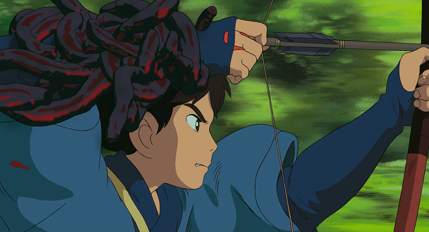Kasra Ghanbari, CEO of Comic Art Fans, interviews sculptor Carlos Soca on his Comic Art LIVE channel to discuss appearing in next year’s OAX.
Miyazaki first worked with Isao Takahata (pictured) in 1964, spawning a lifelong collaboration and friendship
Collaboration

More often than not, filmmaking is a collaborative art form, despite the end product representing the specific vision of an individual director. An animated film in particular requires an extraordinary amount of collaboration, even when created by unique auteurs of the medium like Hayao Miyazaki, Isao Takahata, Katsuhiro Otomo or Satoshi Kon. It might be their extraordinary images we see on screen in the final product, executed from script to storyboard to animation etc. with precision—but part of their genius is an ability to communicate so effectively with their staffs and collaborators that these many minds and aesthetics become a whole, dedicated to realizing that one vision.
Most of us know how hard it can be to collaborate with another person, let alone in a large group, so we can appreciate the scope of the undertaking, as well as how amazing it is when it succeeds the way it does in the hands of the best. A hierarchy, whether in service to a unique vision or the force of will that a great talent generates, makes group collaborations easier, if not always smoother. Each contributor has to either go with the flow or move out of the way, because upsetting the process when you’re too invested in your own agenda can’t be tolerated.
Some of the greatest directors know how to get the most out of their collaborators by finding ways to let them express themselves or add their ideas to the mix, enhancing the whole in ways no other team member could have. There are amazing benefits to allowing every contributor to add their best to the mix; inspiring, entertaining and pushing one another to build upon the whole at each step in the process.
But someone has to have the final say.
Someone has to manage the flow and the process and keep the final vision in everyone’s mind, every step of the way.
Whether they’re dictators or collaborators, directors are ultimately responsible for what ends up in the final cut, so they take the heat or the accolades accordingly. The differences in a particular director’s approach aren’t just about whether the finished film was any good, it’s about whether or not anyone wants to ever work with them again.
Hayao Miyazaki, a Japanese animator, filmmaker, and manga artist
Related Articles
Related
Sculptors Are Different
You might say that sculptors are often the most extroverted introverts in the fine arts world.
Born Artists
Thousands of people might study and practice painting, but people like Frazetta don’t become artists; they’re born that way.
Let’s make something amazing together
 Please note, all Manifest Sculpt work is completed with traditional sculpting techniques—modelling and carving—rather than through modern digital techniques and programs. Consequently, the resin and bronze castings in this edition were also produced through traditional mold making and manufacturing processes. Final Manifest Sculpt commissions are available in a variety of materials, but they are not 3D printed and are not available as printable files. Copyright Notice: all work, including ideation, concepts, stories and their development, character design and production are the property of Carlos Soca unless otherwise noted, and all rights are reserved. Should you wish to discuss collaboration or licensing of an intellectual property or its design, please contact Manifest Sculpt.
Please note, all Manifest Sculpt work is completed with traditional sculpting techniques—modelling and carving—rather than through modern digital techniques and programs. Consequently, the resin and bronze castings in this edition were also produced through traditional mold making and manufacturing processes. Final Manifest Sculpt commissions are available in a variety of materials, but they are not 3D printed and are not available as printable files. Copyright Notice: all work, including ideation, concepts, stories and their development, character design and production are the property of Carlos Soca unless otherwise noted, and all rights are reserved. Should you wish to discuss collaboration or licensing of an intellectual property or its design, please contact Manifest Sculpt.


